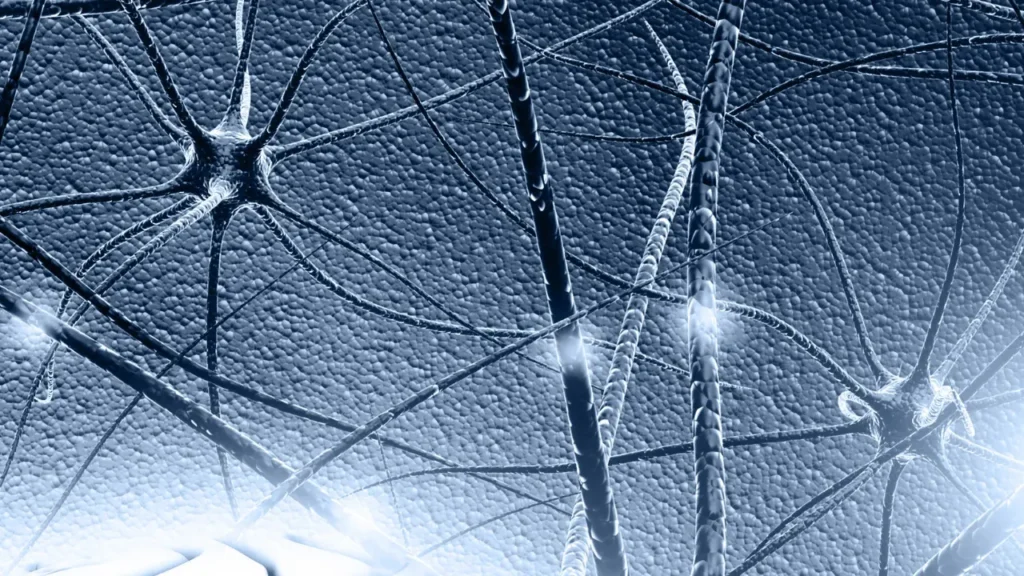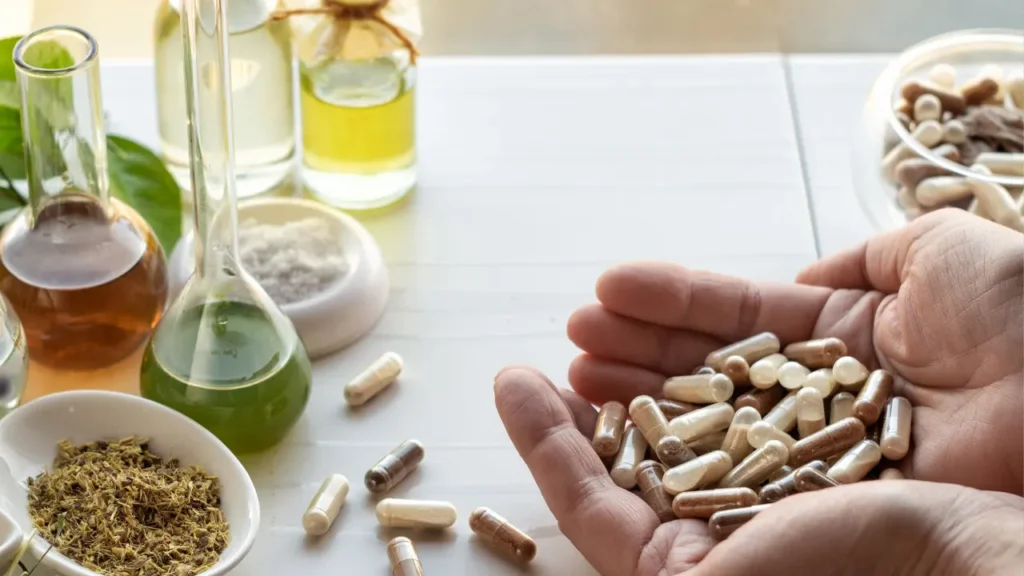Plants such as the Siberian Cocklebur (Xanthium strumarium L. var. sibiricum) have attracted attention in both traditional medicine and modern nootropic societies. Its possible cognitive-enhancing qualities are primarily responsible for this attention. For people interested in using Siberian Cocklebur as a supplement to improve cognitive function, the following thorough examination explores the nature of the herb, its health benefits, the best dosage, possible side effects, potential substance interactions, and suggestions for safe usage.
You May Also Like:
Dr Emil Nutrition Lion’s Mane Reviewed: A Leading Nootropic Mushroom Product
Siberian Cocklebur: Benefits, Dosage, Side Effects, Drug Interactions, and Other Important Information is an original (NootropicsPlanet) article.
Nature of Siberian Cocklebur
Siberian Cocklebur is a variety of the Xanthium strumarium plant, which is distinguished by its bur-like fruits. It is mostly found in Siberia and several regions of Asia, where it has long been utilized in traditional medicine. The plant is believed to have therapeutic benefits due to its abundance of phytochemicals, which include glycosides, flavonoids, and caffeoylquinic acids.
Health Benefits of Siberian Cocklebur
The complex chemistry of Siberian Cocklebur underpins a range of health benefits, particularly related to cognitive function and overall brain health:
- Enhanced Cognitive Function: Siberian Cocklebur can enhance blood flow to the brain and modulate neurotransmitter systems, which can improve cognitive performance. This includes sharper focus and attention span, better memory recall, and higher awareness. Its phytochemicals’ synergistic effects on intercellular signaling and neuronal health are probably the causes.
- Neuroprotection: Neural cells are protected by Siberian Cocklebur’s anti-inflammatory and antioxidant qualities. In addition to being essential in preventing age-related cognitive decline, this neuroprotection may provide defense against neurodegenerative illnesses like Parkinson’s and Alzheimer’s, where oxidative stress and inflammation are major contributing factors.
- Stress Reduction: The phytochemicals in Siberian cocklebur may also aid in regulating the body’s stress response. The use of this supplement can hence lessen the detrimental effects of prolonged stress on mental and cognitive health, even though the precise mechanisms are not fully understood.
- Immune Modulation: Glycosides and other chemicals found in Siberian cocklebur may have benefits for the immune system in addition to cognitive function. A healthy immune system is essential for sustaining general health and also the health of the neurological system.

Chemistry of Siberian Cocklebur
The primary active components of Siberian Cocklebur are its phytochemicals, including caffeoylquinic acids, flavonoids, sesquiterpene lactones (notably xanthinin and xanthanolides), and glycosides. Each of these compounds contributes to the plant’s medicinal properties in unique ways:
- Caffeoylquinic Acids: These compounds are known for their antioxidant properties. They help in scavenging free radicals, thereby protecting cells from oxidative stress. The buildup of oxidative stress has been linked to numerous chronic diseases and age-related cognitive decline.
- Flavonoids: Flavonoids are well-documented for their neuroprotective effects. They can modulate neurotransmitter systems, enhance neurogenesis, and improve blood flow to the brain, which can contribute to improved cognitive functions such as memory and attention.
- Sesquiterpene Lactones: These substances, which include xanthinin and xanthanolides, are particularly interesting because of their neuroprotective and anti-inflammatory properties. They may lessen neuroinflammation and the related cognitive effects by blocking the NF-κB pathway. This pathway is a crucial regulator of the inflammatory response.
- Glycosides: Glycosides in Siberian Cocklebur might contribute to its therapeutic effects through various mechanisms, including modulation of the immune system and potential antiviral activities.
Physiological Mechanism of Action of Siberian Cocklebur
The intricate relationships that Siberian Cocklebur has with the body and brain are thought to be the source of its cognitive-improving benefits. As mentioned, the phytochemicals found in the plant, including xanthinin and xanthanolides, may improve neuronal transmission and cognitive function by modifying neurotransmitter activity. Additionally, these substances may have antioxidant properties that lessen oxidative stress and shield neurons from harm. Furthermore, by reducing neuroinflammation, this supplement can reduce cognitive decline and the onset of neurodegenerative illnesses.


Optimal Dosage of Siberian Cocklebur
To maximize Siberian Cocklebur’s cognitive benefits and minimize any potential adverse effects, the ideal dosage must be determined. However, a person’s age, health, and the existence of any underlying illnesses must be taken into account when deciding on the ideal dosage. Due to the lack of clinical research on Siberian Cocklebur, it is difficult to determine a dosage that is generally advised. To determine effectiveness and tolerance, users should progressively increase dosages from lower starting points. It is imperative to seek advice from a healthcare professional before beginning a new supplement regimen in order to receive customized dosage recommendations.
Side Effects of Siberian Cocklebur
Although there haven’t been many documented side effects from the traditional use of Siberian Cocklebur, gastrointestinal upset, allergic responses, and skin irritation are possible negative effects. These side effects are usually minor and temporary, but they can differ depending on how sensitive a person is to the different parts of the plant. It’s also important to remember that Siberian Cocklebur seeds can be poisonous if consumed in large amounts. This emphasizes the value of utilizing standardized extracts and following dose recommendations.


Potential Substance Interactions with Siberian Cocklebur
Siberian Cocklebur may interact with other drugs. It may interact with drugs like antidepressants or antipsychotics that target comparable pathways. Furthermore, its anti-inflammatory qualities might interact with corticosteroids or non-steroidal anti-inflammatory medicines (NSAIDs). Before taking any drug, you are highly advised to speak with a healthcare provider to asses any possible interactions with the medications you are taking, given if you are taking any.
Best Responsible Use of Siberian Cocklebur
When utilizing Siberian cockshead as a nootropic substance, there are a few important things to keep in mind for responsible use. First and foremost, for safety and effectiveness, it is essential to source high-quality, standardized plant extracts. Second, it is advised to begin with lesser doses and gradually increase them in accordance with each person’s tolerance and response. Thirdly, it’s critical to keep an eye out for any possible negative effects and interactions with other drugs. Last but not least, safe and informed use is a must, especially for people with pre-existing medical conditions or those taking other prescriptions.
Siberian Cocklebur:
Conclusion
Siberian Cocklebur can be found mostly in Siberia and also in some parts of Asia. This plant has a long history of usage in traditional medicine. The article has shown that Siberian cocklebur can improve cognitive function because it increases brain blood flow allowing better oxygen and energy delivery. It has also been shown in studies that neural cells can be protected by this plant. These effects stem from the anti-inflammatory and antioxidant properties of Siberian cocklebur. You should choose from reputable sellers if you are planning to take this supplement in your daily routine. In addition to seeking medical advice, you must strictly adhere to the recommended dosages.


References:
- Siberian Cocklebur – Uses, Side Effects, and More. Retrieved from:https://www.webmd.com/vitamins/ai/ingredientmono-1518/siberian-cocklebur
- Traditional Uses, Botany, Phytochemistry, Pharmacology, Pharmacokinetics and Toxicology of Xanthium Strumarium L.: A Review. Retrieved from: https://www.ncbi.nlm.nih.gov/pmc/articles/PMC6359306/
- Chemical Constituents from The Roots of Xanthium Sibiricum. Retrieved from: https://pubmed.ncbi.nlm.nih.gov/21854171/#:~:text=Chemical%20investigations%20of%20its%20roots,)%2Dferuloyl%2D(%2D)%2D
Important Note: The information contained in this article is for general informational purposes only, and should not be construed as health or medical advice, nor is it intended to diagnose, prevent, treat, or cure any disease or health condition. Before embarking on any diet, fitness regimen, or program of nutritional supplementation, it is advisable to consult your healthcare professional in order to determine its safety and probable efficacy in terms of your individual state of health.
Regarding Nutritional Supplements Or Other Non-Prescription Health Products: If any nutritional supplements or other non-prescription health products are mentioned in the foregoing article, any claims or statements made about them have not been evaluated by the U.S. Food and Drug Administration, and such nutritional supplements or other health products are not intended to diagnose, treat, cure, or prevent any disease.
